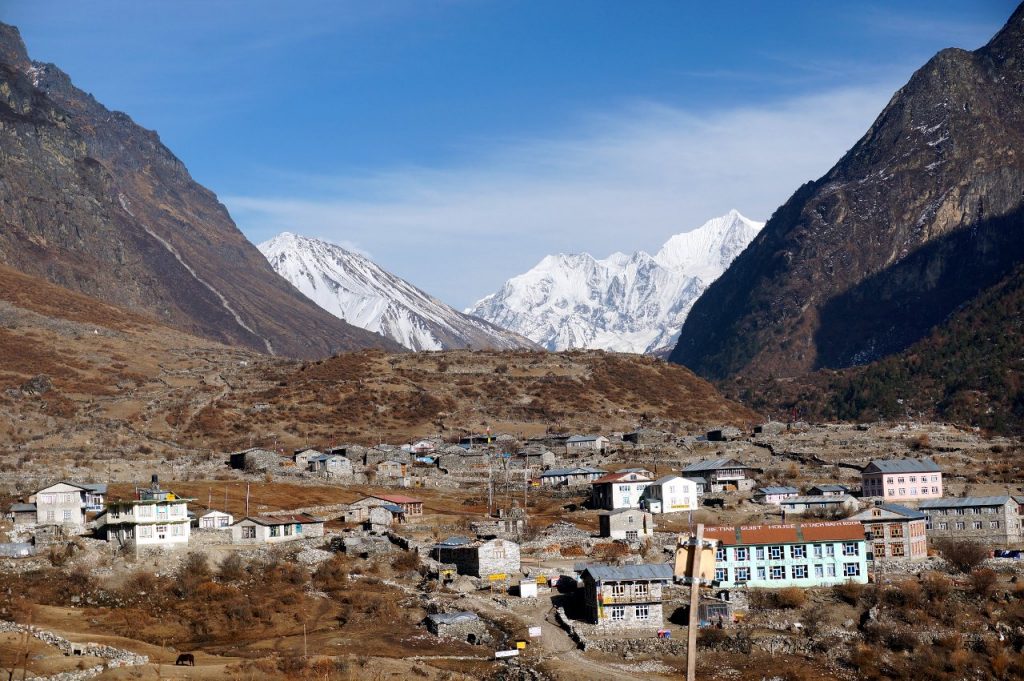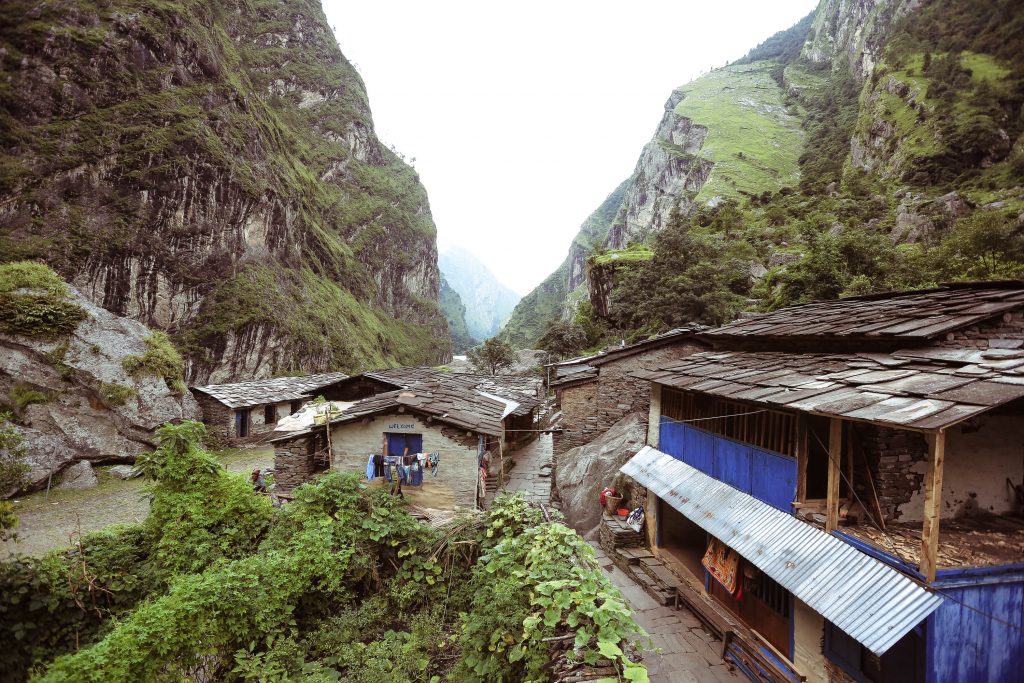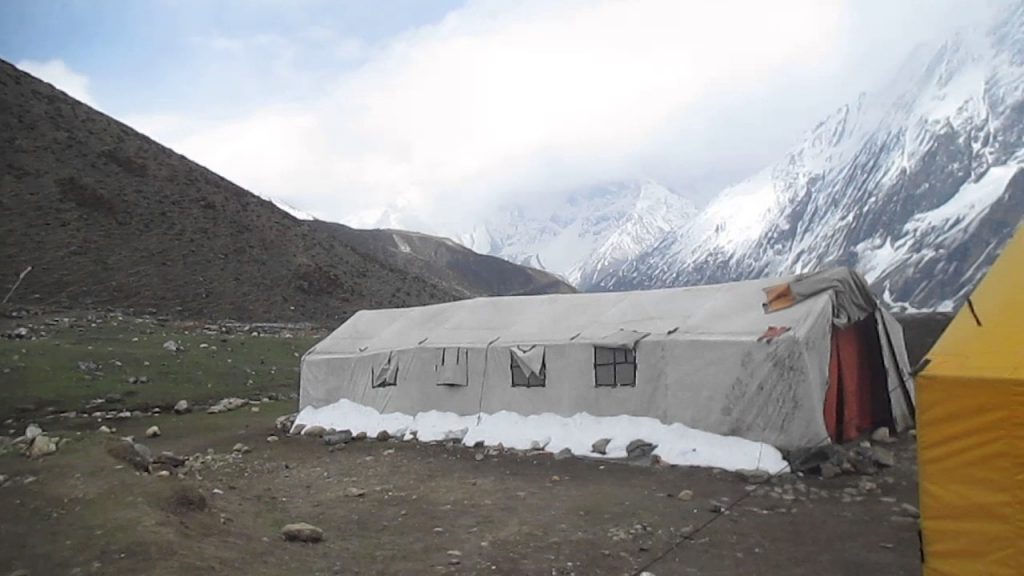Trek to the circuit of Manaslu Himal with beautiful Nar and Phu valley offers excellent moments of life. Highly influenced by ethnic Tibetan culture provides a chance to explore the unique traditions and values of Tibetan people. Trek is better known for exploring the hidden valleys of Nar, Phu, upper Manang, and Nyawal village. Manaslu also was known as the “Mountain of the spirit” is situated in the western central part of Nepal at an elevation of 8163m (26781 ft.). Manaslu the word came from Sanskrit word “Manasa” means “Intellect”. The eight highest mountains in the world offer you unbelievable moments of your life. In 1956, May 9Mt Manaslu was first climbed by the members of the Japanese Expedition. They were Toshio Imanishi and Gyalzen Norbu. Though the region was opened in 1991, it was explored by many expeditions many times ago.


Trekking to Manaslu takes you through the ancient salt trading route. Thus, you get a chance to explore spectacular views of the Himalayas. However see amazing views, Manaslu with Nar Phu Valley Trek also provides you with the ancient arts, Buddhist monasteries, Mani walls, and prayer flags. Great chance to closely explore Tibetan people’s cultures and their daily style of living in remote valleys of upper Manang are the great highlights of this trek. Likewise, trekking through the Manaslu and Nar Phu valley leads you to some very untouched and unspoiled villages and glacial valleys. You pass many remote villages called Samagaon, Samdo, and valleys like Marsyangdi and Gandaki riverside. Although one of the restricted areas, Nar and Phu valley requires a special permit for trekking there.
Not only this, Nyawal village contains the main tourist attraction i.e. the very old cave of Guru Rinpoche at the hilltop of Nyawal village. Trekking to these beautiful regions, valleys, and villages including few populations offer the untouched, unique way of living their lifestyle.
You will have a sightseeing tour around Kathmandu valley which takes in the key attractions in and around Kathmandu. Including AM: Visit 2000 years old Buddhist shrine Swayambhunath, situated on the top of the hill west of the city the most popular and instantly recognizable symbols of Nepal. The temple is colloquially known as the “Monkey Temple”. There are many small buildings and shrines down the hillside behind Swayambhunath.


Explore the colorful Kathmandu Durbar Square – The Old Royal Palace of Kathmandu, Temple of living goddess Kumari, the Jagannath temple, and 17th century temple known for colorfully painted erotic carvings, Kasthmandap temple a three story temple built from a single tree in 12th century. Visit Pashupatinath temple, one of the most sacred Hindu shrines in the World. The holy river Bagmati and the burning Ghats and also visit one of the oldest and biggest stupa of Boudhanath.
First day of the journey starts by a day drive to Soti Khola – your trekking starting point which leads to Manaslu circuit and Tsum valley trek. To reach Kathmandu to Soti Khola, you will have to go past Arughat bazar 570 elevations. Kathmandu to Arughat normally takes around 6-7 hours. From Arughat it takes another 1:30 -2 hours to reach Soti Khola; again depends on the road condition, the type of transportation, driving speed etc. Our guide will pick you from your hotel at a selected time. Drive to Soti Khola which lies at an elevation 700 meters above sea level. Local bus service is available from Kathmandu to Soti Khola distance but it is not recommended. We do provide transportation service by jeep or bus for Kathmandu to Soti Khola distance via Arughat Nepal.
After taking a nice breakfast; you will set off from Soti Khola to Machha Khola which lies at the elevation of 869 meters from sea level and it takes about 6 hours total time. Alternatively you can still plan on going a bit further to Khorla Besi (970m). The village of Machha Khola is bigger than Khorla Besi and you could do washing and flashing yourself at fresh Machha Khola water.
The third-day your Manaslu and Tsum valley trek today has some ups and downs which will make our trail challenging to some extent. From Machha Khola, you will cross the Tharo Khola and reach Khorla Besi. Khorla Besi is another small yet beautiful Gurung village. After another short steep climb, you will reach Tatopani, a hot-spring site where you will be spending some time to enjoy the natural sauna. Then we will climb over a ridge, crossing the Budhi Gandaki River through the suspension bridge and climb up the staircase and a ridge to finally reach Doban. After crossing another suspension bridge, you will climb another stone staircase, go down to the river and climb the stairs again to reach Thado Bharyang. You will walk here in Nepal’s first cantilever bridge.


Then you will cross the west bank of Budhi Gandaki River, climb over the ridge and walk along the river to reach Jagat village. You will hear Nepal’s first cantilever bridge. It is the entry checkpoint of the Manaslu Conservation Area.
You will begin a long descent on a stone staircase towards the river followed by an uphill trek to Saguleri. From Saguleri, Siringi Himal can be seen in the distance. The trail then reaches GhataKhola where you will cross yet another suspension bridge over Budi-Gandaki River. You will then head in the direction of Philim village followed by a climb along the hillside passing many tiny settlements such as Aga, Lokwa. You will finally camp at Deng which is a village followed by a gradual walk after Ekle Bhatti.
Trekking from Deng to Ghap takes nearly 7 to 8 hours. At first you will cross the Budi Gandaki River, after having breakfast and trek upward. Walking along the trail offers a chance to explore the enchanting waterfall and streams flowing on the way. After this you will pass by the amazing settlement of Gurung people and closely observe the daily living style with cultures and traditions follow by them. At last you will cross the Sharing Khola and reach Ghap.
First trekking from Ghap for about half hour takes you to the beautiful Namrung village. Then again walking from Nagrung for 2 hours takes you to Lihi. Lihi is also known as Ligaon. The main attraction of this place includes Hinang Gompa and Himal Chuli range. Trekking for 2 and half hours, crossing the Hinang Khola, we reach Lho. Lho is mainly known for the Gompa, where you can observe more than 150 children getting education. Region lies on the slope of the hills and offers you the panoramic views of Mt. Manaslu with local villages surround it. Now we trek from Leh to Samagoan passing the place Shyala. In Shyala, you can observe the yaks grazing there.
You will spend an extra day in Samagaon to acclimatize. Spending this extra day in Samagoan helps you to adapt with increasing altitude. You will have a day hike either to Manaslu Base Camp or to PungyenGompa. Resting in Tea house and exploring the village around can also be another option.
Today, you will descend to the Budhi Gandaki River, which has turned north and follow it to a bridge over a side stream. The trail to the left leads to the Manaslu Base camp. The Larkya la Trail passes several main walls as the valley begins to widen. It is an easy trail on a shelf above the river passing the juniper and birch forests of Kermo Kharka. You will drop off the shelf, cross the Budhi Gandaki on a wooden bridge and climb steeply onto a promontory between two forks of the river. From a stone arch you can view a large white kani. Finally passing through the kani you will find Samdo (3780m).
Even today, you will continue your walk down the edge, cross the wooden bridge over Budi Gandaki and begin walking upward. Upon crossing two streams and witnessing the Larke Glacier you will go around the valley of the Salka Khola and climb up again to the stone guest house (4460 m), which is not a lodge but a kind of shelter called Dharamshala, also known as Larke Phedi. This is the highest altitude at where you will sleep. The short walk today also leaves plenty of time for acclimatization and relaxing in the afternoon.


After a short climb, you will reach a valley on the north side of the Larke Glaciers from where you can enjoy great views of Cho Danda and Larke Peak. Finally, you will walk across the moraines of the glacier, making a gradual ascent which becomes steeper only in the last section of the pass. From the past, there are outstanding views of Himlung Himal, Cheo Himal, Kangguru and the huge Annapurna II. It is a longer day than usual to Bumthang, but to walk into these low pastures with the evening mist coming in with Mt. Manaslu looming close by is an overwhelming experience.
Trekking from Bhimtang to Tilje takes you at an elevation of 2300m / 7290 ft. in 6 hours. It seems to be an easiest trek through Dudh Khola and bamboo pine forests. You will descend down ward and pass by the beautiful small villages and then continue walking for some hours. It takes you to the largest settlements of Tibetan people where you will get a chance to closely observe their cultures and traditions.
Walk for about 5 to 6 hours to reach Koto from Tilje at an elevation of 2610m/ 8563ft. You will walk through the trail of Annapurna Circuit. So, the trail offers you the spectacular views of Annapurna II and Manaslu Peak with daily lifestyle of Thanchowk village people. Following the trail over the Marsyangdi River, you will pass by Bagarchap Village. Then you will move to Koto through pine forest, passing Timang at 2510 m. Reaching at Koto you will get to see the spectacular views of Annapurna, Lamjung and Manaslu range.
The trekkers will start the day as early as possible because they have lots of distance to cover. You have to cross the river to enter the Nar and Phu valleys. The towns that are nearby to the Annapurna Circuit are relatively much more developed than the other valleys. But these valleys are a total remote area in terms of development. The trekking route passes through beautiful woods, past small cave shelters and pilgrims, resting places. The trail emerges from the narrow canyon and passes under a wide waterfall. The woods from the canyon become thinner and the vistas wider. The route of the Meta involves climbing a steep hill. The hill offers the travellers the amazing and stunning views of some of the giant snow capped peaks of the area.
The trail starts with some of the unique, colourful Tibetan Buddhist chortens that Nar and Phu valley are famous for. The trail meanders along the ridge with a stunning view of the magnificent Nar Phedi Monastery. This is the place usually trekkers take some break time enjoying the harmonious and peaceful view of the monastery. After about 2 hour of hiking through amazing canyons and gorges you will reach a monolith that guards the steep trail up to Phu.


After passing through these trails, you can get the first view of the three villages in the area as well as the old ”dzong” (Tibetan-style fortress) and the remains of the two ruined forts, impressively situated at the top of the flatlands before reaching the village. The trekkers can watch the beautiful and wonderful line of the color of chortens on the landscape just after crossing the bridge in to Phu. After a rest and refreshments, trekkers can walk around through the famous Tashi Lhakhang Gompa. They can pay respects to Lama Karma Sonam Rimpoche who came to Nepal with the Dalai Lama in 1959.
It is good to spend an acclimatization day in Phu. The travellers can explore the tiny alleyways of the town or hike up to Himlung Himal Base camp. Phu is an interesting village. The travellers can spend their day sitting with the villagers, watching them spin their yak and sheep wool, pound mustard seeds into a paste for an oil or observe their culture and traditions. The travellers who are extra energetic and enthusiastic can hike up to Himlung Himal Base camp which will take you through a glacial valley. The 7125 metre peak was recently opened for climbing. On this beautiful trail you will see herds of blue sheep skillfully clambering up the steep cliff. The return trip from this peak takes about four to five hours.
The Nar Phedi is about 3490 metres above sea level. The trekkers have to back down towards Meta and stop at the Nar Phedi monastery. The monastery is the only accommodation for the night at Nar Phedi. The rooms of the monastery are neat and clean and the nuns here are extremely humble and welcoming. The travellers can help them in a kitchen and watch them prepare dinner on a modest fireplace. Around 5 pm they usually perform a ritual which is the blissful and amazing scene to witness. The monastery also has a small donation box outside the entrance of the monastery where you can leave some contribution for the maintenance of this beautiful and friendly place.
The trekking starts with the climb out from Nar Phedi and following a windy path up a hill towards Nar. The trail passes through the line of wonderfully painted, bamboo-topped chortens on the way into the ancient village. You will arrive in the village around lunch time. Even though Nar is not far from the main Annapurna trail, it rarely gets its visitors. But the scene around the village is really picturesque. Nar village is a bit more social and lively than Phu village. During day time you can witness the village square teeming with chatting women with their back strap looms weaving wool fabric for rugs and blankets. There are few teahouses on the outskirts of Nar and you can stay in a comfortable lodge with an extensive menu.
The Ngawal is at the altitude of 5240 metres from the sea level. It is the long day trek so the trekkers have to start their trek before the sunrise and head towards the Kang La Pass which leads back on to the popular Annapurna Circuit. The trail is not a difficult path but the lengthy one. Once you reach the top you can enjoy the majestic views of Annapurna II, Gangapurna and Tilicho Peak. The trail starts off down the road towards Ngawal. Moreover, Ngawal lies on the upper Pisang route of the Annapurna Circuit. It is certainly very different from the other ancient villages. The lodges are big, the menus are much more comprehensive and there are even Wi-Fi and phone signals in most lodges.
The trail gets much greener as you descend more than 2000m from the pass. The weather is also relatively hot and warm here. The trekkers have to start their day early to reach Pisang. The trail is wide and comfortable and passes a beautiful lake just outside Pisang. You can stop for a quick snack in the village and take a ride back to Besisahar. The trekkers can stay at the hotel in Besisahar and start preparing for the tomorrow departure to Kathmandu.
Enjoy the beautiful scenic views of landscapes, hills and mountains through your ride to Kathmandu valley.
Shopping is my option in contrast to Red Bull. Regardless…


Hundreds of years of preservation and perseverance, nourished and timely…
Among the many 12 years festivals Nepal has, Lha Phewa…